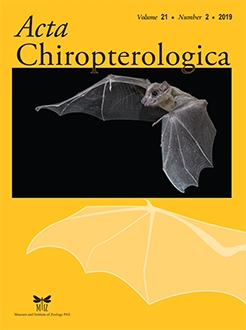A large part of the natural vegetation in the tropics has been replaced by pastures and crop fields. To evaluate the value of mango orchards in the conservation of phyllostomid bats in a fragmented, heterogeneous landscape in Veracruz, Mexico we compared species richness, total abundance, dominance, evenness and abundance per feeding guild of bats in mango polycultures, mango monocultures and in semi-deciduous seasonal forest. Using mist nets at ground level, we captured 882 phyllostomid bats belonging to 17 species. Bat species richness was similar between the mango orchards and the forest, but the number of bats was significantly higher in mango polycultures, followed by mango monocultures and the forest. The frugivore guild was the most numerous in the mango orchards. Sanguivores were notably more numerous in the forest. Our results suggest that both types of mango orchards are different from the forest, since they are characterized by differences in bat species composition and feeding guild. We conclude that mango agroecosystems, when small in size and close to the forest, are important in the conservation of bats; it is there where bats are abundant and maintain a level of species richness similar to that of the original vegetation.
How to translate text using browser tools
2 March 2020
Mango Orchards and Their Importance in Maintaining Phyllostomid Bat Assemblages in a Heterogeneous Landscape
Sergio M. Madrid-López,
Jorge Galindo-González,
Alejandro A. Castro-Luna
ACCESS THE FULL ARTICLE

Acta Chiropterologica
Vol. 21 • No. 2
December 2019
Vol. 21 • No. 2
December 2019
agroecosystem
composition
diversity
Mexico
perennial crops
Phyllostomidae




